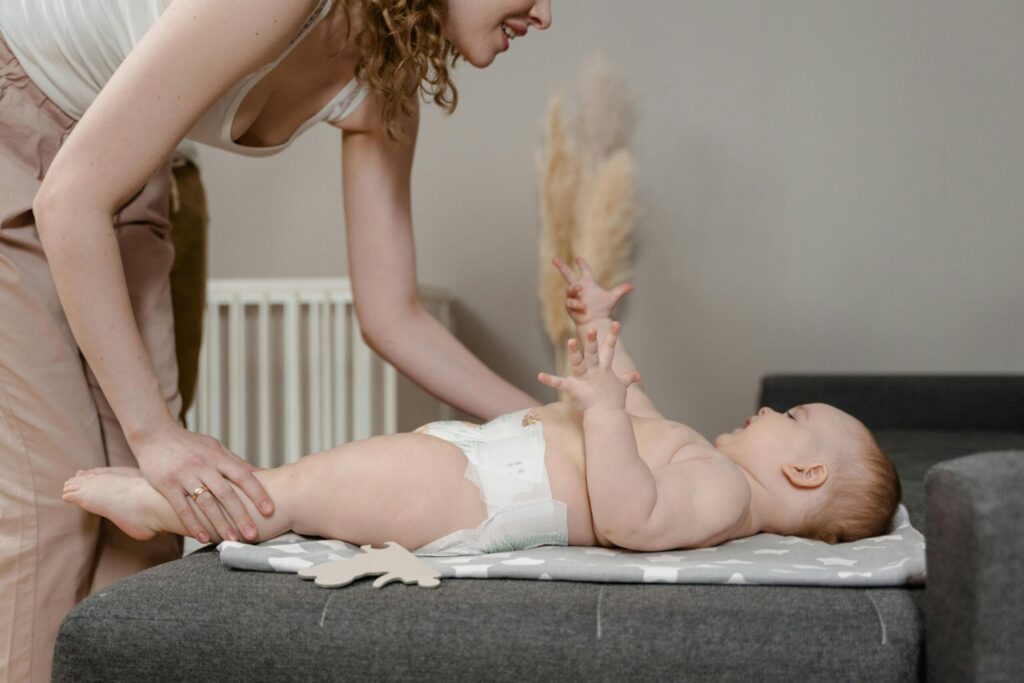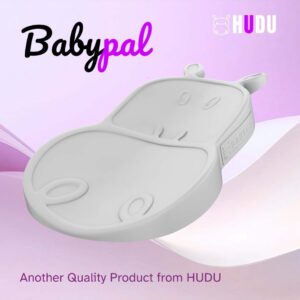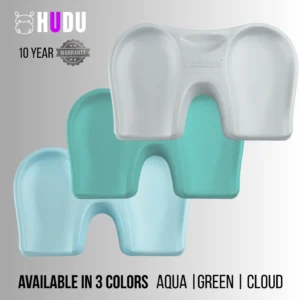8 Changing Pad Safety Tips Every Parent Should Know
As a mom of four, I’ve lived through more diaper changes than I can count — and I’ve learned that safety during those moments is non-negotiable. Whether it’s a sleepy newborn or a squirmy toddler, diaper changes can turn chaotic in seconds. Trust me, I’ve had my share of close calls: babies grabbing everything in sight, toddlers rolling over at the worst possible moment… you name it.
In this guide, I’ll walk you through practical changing pad safety tips every parent should know — from choosing the right size pad to keeping dangerous items out of reach. And at the end, I’ll share why I designed Babypal to make diaper changes safer for both parents and little ones.
Apparently the average diaper change is around 5,000 times per baby?? So few? It seems like more 🤣
Changing Pad Safety Tip #1: Choose the Right Size Pad
Your changing pad should fit your baby comfortably — not too tight, not too loose.
- Standard size: 16″ × 32″, suitable up to around 18 months.
- Check the fit: The pad should sit flush on the table with no edges sticking out.
- Avoid extremes: Too small = dangling legs and discomfort. Too big = won’t sit securely.
Before buying, always compare the dimensions of your pad and your changing station.
Changing Pad Safety Tip #2: Make Sure the Changing Station Fits
The table or dresser you’re using is just as important as the pad itself.
- Look for one that’s around 36–42 inches long and 18–20 inches wide.
I once tried using a narrow dresser with my second baby. It felt fine at first, but as she grew, it quickly became cramped and wobbly. Lesson learned!
Changing Pad Safety Tip #3: Keep Essentials Within Reach
Never step away mid-change. Babies move faster than you think. Keep these items within arm’s reach:
- Diapers
- Wipes
- Rash cream
- Pad covers
- Spare clothes
- Hand sanitizer (for you)
Having everything nearby keeps the process safe and stress-free.
Changing Pad Safety Tip #4: Keep Small Items Out of Baby’s Reach
Babies love grabbing — and mouthing — whatever’s closest.
I’ll never forget when my 7-month-old managed to snatch a nasal spray off the changing table. Before I noticed, he had the cap in his mouth. Thankfully I caught it in time, but it was a wake-up call.
Keep all meds, sprays, creams, scissors, and small toys far from reach. Store them in a drawer or basket.
Changing Pad Safety Tip #5: Never Leave Baby Unattended
This is the golden rule. Even if your baby hasn’t started rolling, accidents happen in seconds. If you need to walk away, take your baby with you or ask for help.
Changing Pad Safety Tip #6: Be Extra Careful Once Baby Rolls or Sits Up
Once rolling and sitting begin, diaper changes get tricky. Always keep one hand on your baby.
If wriggling becomes too much, move changes to the floor. It’s less convenient, but much safer.
Changing Pad Safety Tip #7: Secure the Pad to the Table
Most pads include straps or anchors to hold them in place. Use them if you can.
If yours doesn’t, a fabric-free, non-slip pad is a better choice — heavier and more stable than flimsy foam pads. Still, nothing replaces your hands and attention.
Changing Pad Safety Tip #8: Why I Designed Babypal for Safety
After years of juggling unsafe, flimsy pads, I created Babypal to solve the problems I kept running into:
- Raised sides keep baby from rolling.
- No loose straps or buckles — nothing to chew, nothing to rely on.
- Elevated headrest supports baby’s head and gives parents a better view.
- Waterproof, fabric-free surface grips the table and stays hygienic.
Babypal gave me the peace of mind I needed with four little ones.
Final Thoughts on Changing Pad Safety
Changing pads may seem like a small detail, but they play a big role in keeping your baby safe. The right pad, the right station, and a little preparation can prevent accidents and make diaper changes far less stressful.
If you’re looking for a safe, sturdy option, the Babypal Changing Pad (available on our website or Amazon) is worth a look. I wanted cupped sides, it had to be non-slip yet soft, light enough for me to drag to the lounge with a baby always on my hip, an elevated headrest (all my babies seemed to suffer from reflux, so the raised head was essential), and a cute design. All these things were in my head.
Voila! Enter Babypal.
Happy diapering — and stay safe!












